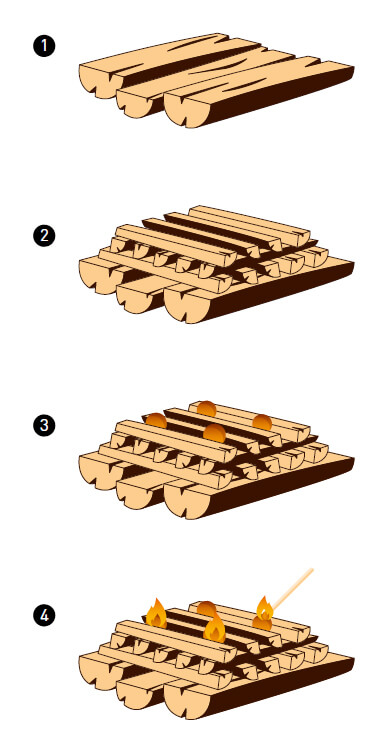Correct lighting of a wood-burning stove
Lighting a wood-burning stove is not just lighting a fire. It’s a science, an art, and yes, it’s actually a bit of a craft. It’s not just about getting the fire to burn – it’s about getting it to burn right!
The tips below not only ensure a cosy atmosphere, but also an optimal combustion and thus utilisation of your wood’s calorific value.
Why is it so important to light the wood-burning stove correctly?
Well, if you see that when you light your wood-burning stove correctly, you ensure that your wood burns as cleanly and efficiently as possible. This means that you get the most out of your firewood’s calorific value and that you minimize the amount of smoke and emissions that come out of the chimney. In short: You get more heat for your money, and you are friendlier to your neighbors and your local area.
What do you need?
- Kindling blocks or ignition wool. For example, Burner kindling briquettes.
- Kindling branches, about 2-3cm thick
- Firewood with a length of about 20-30cm
But how do you light a wood-burning stove correctly? Let me give you some tips:
-
Start by placing your firewood in the bottom of the stove. If there is a little ash left over from the last time, it is actually only good – the ash helps to insulate the heat and make the fire burn better.
-
On top of the firewood, place some smaller pieces of wood or twigs. They will quickly catch fire and help get the larger pieces of firewood going.
-
Use wood stove fire starters to light the fire. They burn cleanly and efficiently, and they quickly cause the fire to spread to the rest of the firewood.
-
Make sure there is a good air supply at first. To do this, open the air intake completely. When the flames are well underway, you can turn down the air a little again.
-
Remember to use dry wood. Damp wood produces more smoke and less heat – and that’s not what we’re after!
-
Add more firewood before the old one is completely burned out. In this way, you ensure a constant and stable combustion.
Adding firewood
- Open the door carefully.
- Collect the remaining embers together.
- Place firewood on the embers with the split side down.
- Open the air supply completely again until the wood is burning.
Turning off the wood-burning stove
- Do not add more wood to the fire, the fire will go out by itself.
- Ash residue can remain on the bottom until next time.
- Dirty window? As soon as the fire has cooled down, dip a damp piece of paper towel into the ashes and simply wipe the soot residue off the glass. Or use this glass spray.
These tips are a good start, but remember that every wood-burning stove is different. It can take some time to get to know the specific characteristics of your oven, so be patient and try it out.
I have also collected some tips for maintaining your wood-burning stove here.
Lighting your wood-burning stove correctly is an important skill that can save you time, money and hassle. So the next time you’re faced with a cold winter evening, keep these tips in mind and light up like a true champion. Enjoy!

Other tips
- Only burn completely dry wood.
- The moisture content should be between %-20%.
- Do not use too much firewood.
- Make sure the chimney is maintained.


